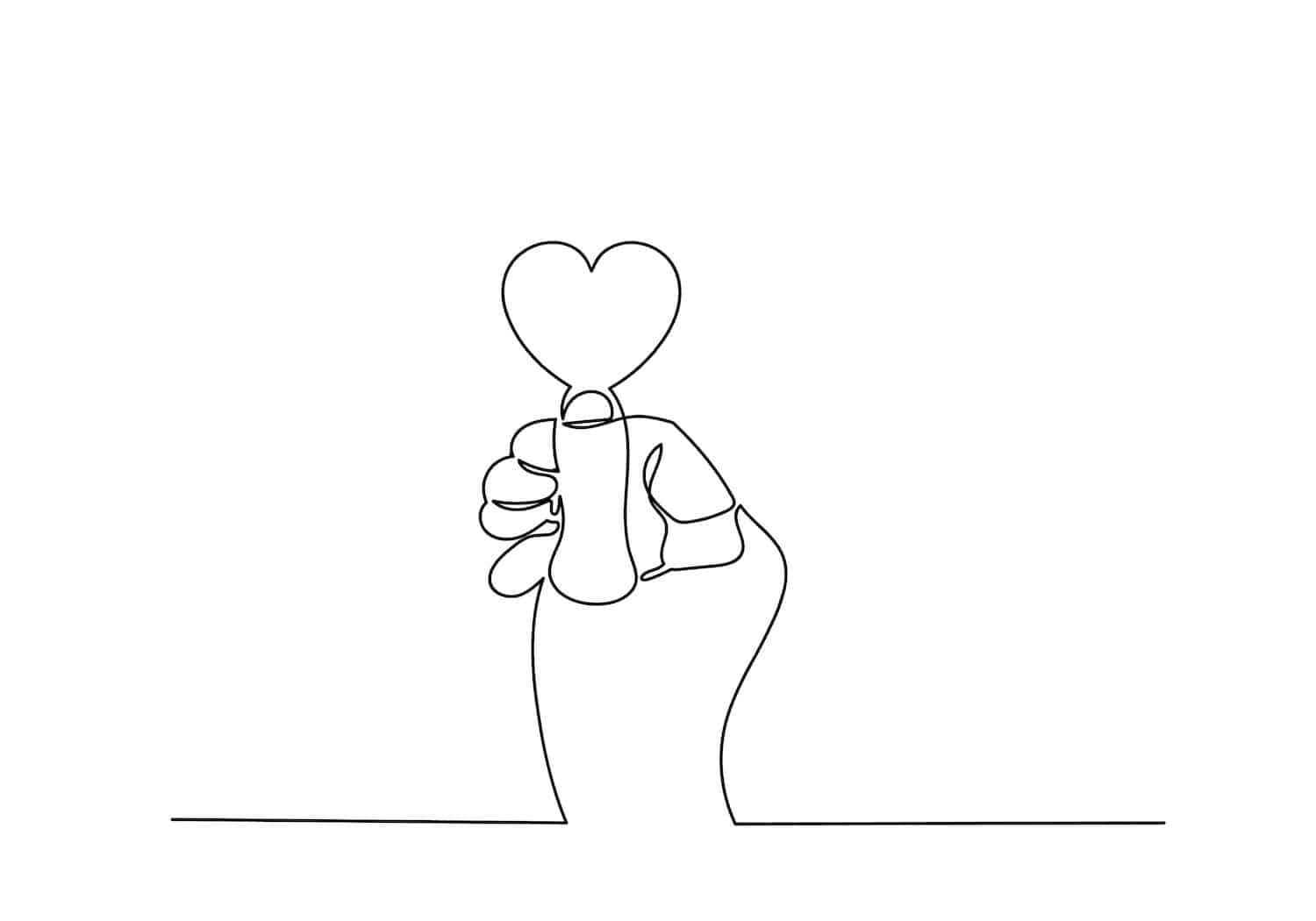Trigger warning: Self-harm. This article is meant for educational purposes. If you are having suicidal thoughts or feel at risk of harming yourself, you are experiencing a mental health emergency and need urgent support. Reach out to The National Suicide Prevention Lifeline 24 hours a day, 7 days a week by calling or texting 988.
Most individuals who struggle with self-harm go to great lengths to keep their experiences hidden. They may conceal their feelings, hide evidence of their behaviors, and withdraw from family and friends. While the signs may not be immediately apparent, it can be painful to acknowledge that a loved one is struggling with self-harm.1
Self-harm is a complex condition and, unfortunately, is increasingly common among young people in the United States. Research indicates that approximately 17.2% of adolescents, 13.4% of young adults, and 5.5% of adults report self-harming behaviors at least once. The lifetime prevalence of self-injury ranges from 12% to 37.2% for adolescents and 12% to 20% for young adults.2
Why do people self-harm? Understanding the underlying mental health issues is crucial for recognizing the warning signs and ensuring that individuals receive the treatment they need. If you are concerned about yourself or a loved one, continue reading to learn more about self-injury, its causes and signs, and how to seek support.
What is Self-Harm?
Self-harm refers to the intentional, self-inflicted injury resulting in immediate damage without suicidal intent. Often called non-suicidal self-injury (NSSI), self-harm includes a variety of behaviors in which individuals inflict pain upon themselves deliberately. The most common affected areas are the hands, wrists, stomach, and thighs, though self-injury can occur anywhere on the body, often in concealed areas.
The emotional landscape involved in self-harm is often complex. Individuals who struggle with self-harm usually face other mental health conditions, including heightened levels of depression, hopelessness, and dissociation. They may experience emotional dysregulation and find it hard to cope with complex emotions, making it difficult for them to find alternative ways to express their pain.2
Additionally, experiences like bullying or questioning one’s identity can amplify these struggles, leading to self-injury as a misguided attempt to cope or regain some sense of control.
Common reasons for self-harm
Self-injury can serve various functions for those who engage in it. Here’s a closer look at the possible causes of self-harm:
- Relief from distress: Offers temporary relief or escape from emotional pain through the occurrence of physical pain
- Sense of control: Creates a sense of support a person may feel they lack emotionally or otherwise
- Feeling something: Creates a tangible sensation, affirming one’s existence
- Expression of internal pain: Externalizes feelings through self-harm mechanisms that are otherwise difficult to articulate
- Communication: Signals to others that something is wrong when words fail
- Self-punishment: Soothes feelings of guilt or shame
Recognizing the underlying emotions and finding healthier coping mechanisms is crucial for healing. Support from friends, family, and mental health professionals can make a significant difference in helping individuals navigate these challenges.
Types of Self-Harming Behaviors
Self-harm encompasses a wide range of behaviors, and there is no single profile for what it looks like. Some individuals may engage in one specific form of self-injury, while others may use multiple methods. Common types of self-harm behaviors include:3
- Cutting or piercing the skin with sharp objects
- Burning the skin with cigarettes, candles, or matches
- Embedding objects under the skin
- Hitting or punching oneself or objects, such as walls or furniture
- Bruising oneself through pinching or striking with an object
- Scratching or rubbing that damages the skin
- Poisoning oneself through an intentional overdose of alcohol or drugs or ingesting non-consumable substances
It’s important to note that tattoos and body piercings are generally not considered self-injury unless an individual specifically seeks them out as a means of self-harm.
Risks Associated with Self-Harming Behaviors
Self-injury can lead to severe complications — both emotional and physical. Here are some potential consequences:
- Emotional Impact: Increases feelings of shame, guilt, and low self-esteem
- Infections: Leads to further health complications if wounds are not adequately cared for or if tools are contaminated or shared
- Scarring: Adds another source of distress
- Worsening Conditions: Leads to more severe symptoms if other mental health conditions are present
- Severe Injury: Poses a risk to one’s life, especially if not treated promptly or if injuries are extensive.4
Recognizing these complications is essential in fostering understanding and encouraging individuals to seek help. Supportive therapy can play a vital role in recovery.
Warning Signs of Self-Harm
Individuals who self-harm often go to great lengths to conceal their behaviors, making it challenging to recognize when a loved one is struggling. Understanding the warning signs of self-harm is essential for identifying the issue and ensuring a loved one receives help as quickly as possible.
If you’re concerned about a loved one engaging in self-harm, watch for the following signs:4
- Scars: Both fresh and old, healed scars, often in specific patterns
- Fresh injuries: Cuts, scratches, or puncture wounds
- Sharp objects: Keeping or possessing implements for self-injury
- Secret stash: Hidden sharp objects, lighters, or matches
- Concealing injuries: Wearing long sleeves or pants to hide wounds — even in hot weather
- Frequent accidents: A pattern of unexplained injuries
- Emotional changes: Impulsive or intense mood swings and behavioral changes
- Social withdrawal: Isolating from friends and family
- Difficult relationships: Complicated or tumultuous interactions with others
- Low self-esteem: Expressions of hopelessness, worthlessness, or negative self-talk
Recognizing these signs can help you provide support and encourage your loved one to seek the help they need.
Self-harm and Suicidal Ideation
Self-harm can often be mistaken for suicidal ideation by those unfamiliar with the behavior. While self-injury may sometimes precede suicidal thoughts or actions, it does not necessarily indicate that an individual is contemplating suicide. Some people may experience passive suicidal ideation — fleeting thoughts of wanting to die — but not everyone who engages in self-harm has these thoughts.2
Instead, self-injury is frequently used as a coping mechanism to manage stress, emotional pain, or trauma. It occurs more often than suicide attempts, with a prevalence nearly double that of suicide. Most individuals who self-harm are doing so as a maladaptive coping mechanism and not as a suicide attempt or means to end their life.
However, research indicates that non-suicidal self-injury can be a significant predictor of future suicidal ideation or attempts. With 12.1% of adolescents reporting suicidal thoughts and 4.1% having at least one attempt by age 18, it’s crucial to take self-harm seriously, regardless of intent. The earlier someone experiencing self-injury receives the care and support they need, the less likely it is that their behavior will escalate to suicidal thoughts or attempts.5
Finding Help for Self-Harming Behaviors
Fortunately, help is available for anyone experiencing thoughts or behaviors related to self-harm. Reaching out for support can be challenging or scary, but many people face similar struggles. Remember, you are not alone. Facilities like Lifeskills South Florida offer a pathway to healing from self-harm and other mental health challenges.
Mental health treatment addresses all aspects of self-harm, including the underlying mental health disorders or trauma that may contribute to these behaviors. Regardless of who you are, where you come from, or what you have been through, Lifeskills South Florida recognizes your unique experiences and is committed to providing compassionate, individualized care.
Lifeskills South Florida is here to help
At Lifeskills South Florida, we are dedicated to offering comprehensive support for anyone dealing with self-harm, suicidal ideation, or other mental health difficulties. Our holistic approach to care addresses all facets of mental health, guiding you from darkness back into the light. We will help you uncover underlying issues and develop healthy coping strategies for managing your emotions.
To learn more, call us or fill out our online form today.
References
1. Cornell University. (2024). What is self-injury?.
2. American Psychological Association. (2015). Who self-injures?.
3. Substance Abuse and Mental Health Services Administration. (2023). Self Harm.
4. Mayo Clinic. (April 2023). Self-injury/Cutting.5 Children. (2023). Self-Harm Behaviors, Suicide Attempts, and Suicidal Ideation in a Clinical Sample of Children and Adolescents with Psychiatric Disorders.
5. Predescu, E., & Sipos, R. (2023). Self-Harm Behaviors, Suicide Attempts, and Suicidal Ideation in a Clinical Sample of Children and Adolescents with Psychiatric Disorders. Children, 10(4), 725.




